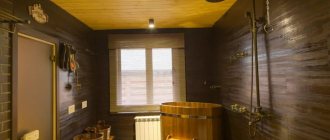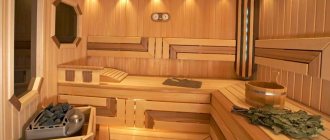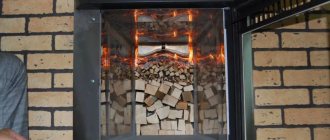There are quite a lot of modern ways to heat a home sauna built near the house, from using electricity to extracting steam from the central line. Heating a bathhouse is quite expensive, but often there is simply no other choice. The only economically viable option is to supply gas to the bathhouse from home. Experts say that the gain on the financial side of the issue is up to 40%, although in fact gasification does not always turn out to be so profitable.
Installation work and gas laying can only be carried out by companies with a license for gasification of private households
Gas procedure, practical advice
The preparatory stage is the purchase of pipes, consumables and gas equipment.
To gasify a bath according to the rules, you need to check the project and the received technical conditions. The documents contain a calculation of the length of the pipes, an indication of their diameter, as well as the name and brand of permitted equipment. Experienced users advise purchasing pipes and consumables with a 30 percent reserve.
Stage No. 1 - installation of an external gas pipeline
Since it is recommended to install an external gas pipeline above ground, reliable supports will be required to secure the pipes. They must raise the gas pipeline above the ground by at least two meters.
The following requirements apply to supports:
- the distance between the supports is determined by the project;
- the strength of the structure should be calculated based on the gas pipeline’s own weight and the weight of possible ice with a coefficient of 1.2;
- the fastening part must correspond to the design dimensions of the pipe.
If the project specifies the installation of a gas pipeline with a slope, you can install metal spacers between the soles of the supports and embedded structures. The installation of such gaskets between the pipe and the support is prohibited.
The rules for placing supports also apply to the distance between them and the welds on gas pipes. This distance cannot be less than 5 cm
To protect against the effects of wet precipitation, the outer pipeline is painted with bright yellow oil paints. This is done by employees of the gas company that took over the installation.
But after they leave, many summer residents repaint the pipes in other colors that match the main palette of the site. This is prohibited.
Stage No. 2 - laying pipes inside
The internal gas pipeline must also consist of metal pipes. In places where they pass through the walls, it is necessary to drill holes and install embedded iron sleeves in them. Laying pipes through walls is permitted only through such sleeves.
When gasifying wooden buildings, this is extremely important, since any wood shrinks over time. And this is fraught with damage to the unprotected gas pipeline
Holes for the gas pipeline are prohibited from being made between logs or beams, at their junction. They must be located inside solid wood
Fastening must be carried out using the products specified in the project. It is better to purchase fasteners in specialized stores, since regular retail outlets often offer analogues that do not meet the requirements.
To implement turning moments, it is important to use an induction pipe bender - a device that allows you to change the angle by 90 degrees. Manual bending with heating is not suitable in this case, as it can damage the structure of the metal
At the points where gas equipment is connected, the end of the pipe is threaded. Filters are attached to this thread and shut-off valves are installed. During the final pressure testing, a specialist must check the tightness of these connections and the integrity of the welds.
Before performing welding work, you should make sure that you have a fire extinguisher, cover the wooden walls of the bathhouse and nearby buildings with asbestos or metal sheets
It is important to ensure that the gas pipes inside the bathhouse do not intersect with the electrical wire. The minimum distance between them is 10 cm
If water supply or sewerage is installed in the bathhouse, then it is necessary to maintain a distance of 2 cm between them and the gas pipeline branch.
Stage No. 3 - installation of the chimney
We have already discussed the rules for installing a gas stove. Therefore, the next step is the organization of the chimney. Gas companies also have special requirements for it.
During installation, it is recommended to ensure:
- lack of pipe joints in the ceilings - it is necessary to install the chimney so that the connections are located above or below the ceiling;
- the location of the pipes relative to the flammable elements of the building - the distance between them should not be less than 1 meter.
Above a flat roof, the chimney can protrude 1.2 meters or more. Above a roof with slopes, the minimum elevation value is 0.5 meters.
Legal requirements for design, equipment, installation
The basic requirements for laying gas pipes inside the bathhouse, the design of the stoves and the parameters of the room are prescribed in SNiP 2.04.08-87 .
The arrangement of an external gas pipeline and connection features are regulated by SNiP 42-01-2002 .
Conditions for approval of the project by technical supervision
It is extremely rare that bathhouse owners manage to coordinate gas wiring, since their buildings do not meet the requirements. It is more correct to first create a project and then begin construction. Moreover, the building must be located on a solid foundation.
Old baths often have low ceilings. Due to this parameter alone, they are not suitable for gasification. A properly designed room has a distance between the floor and ceiling of more than 2 meters
The main criteria are the presence of an emergency exit, a transom for ventilation or an exhaust ventilation duct, and sufficient area. The volume of the room where the oven is located must be more than 8 cubic meters. And the passage next to it cannot be less than a meter wide.
Attention is also paid to the doors - each of them should open outward and have functional handles on both sides. The doors themselves can only be made of non-combustible materials. All this is taken into account when agreeing.
Equipment selection criteria
Not all types of stoves are suitable for installation in gasified baths. Only factory-made metal products are allowed, the design of which allows combustion products to be discharged into the chimney. Stone and brick-lined ovens are prohibited. Important points are the presence of a fuse that blocks the supply of fuel when the fire dies out and the tightness of the gas chamber.
It is worth noting that leading Russian manufacturers, such as Ermak , Termofor , Teplodar, produce approved models with excellent automation and high-quality components. While the products of European factories do not always successfully pass testing.
When purchasing, check the quality and safety certificates, check the product passport filled out by the manufacturer. It must contain marks indicating successful completion of technical control.
The stove should be serviced not in the steam room, but in the dressing room. Therefore, the design must have an external fuel channel.
Particular attention is paid to the type of jets: when using a main gas supply, expanded nozzles are required, while when using a propane mixture from a cylinder, narrowed nozzles are required.
Rules for installing a gas pipeline, stove, chimney
The installation rules include requirements not only for laying a gas pipeline, but also for installing a fire alarm. Highly sensitive carbon monoxide sensors can play this role.
The pipe outlet from the house should rise 2 meters above ground level and enter the dressing room at the same height. Laying under or inside the foundation is prohibited.
A valve is installed at the end of the pipe, which, in the event of depressurization of the equipment, will immediately ensure complete shutoff of the gas pipeline.
When choosing equipment for a bath, you should always pay attention to the permitted operating temperature. For example, many Chinese CO sensors are designed for temperatures up to 55 degrees
Particular attention is paid to the placement of furnaces. Wooden walls next to them must be insulated with non-combustible materials. An acceptable option is sheathing with thermal insulation and steel sheets.
The fireproof distance from the insulated wall to the product body is 60 cm. All other objects, ceilings, wall shelves must be at a distance of at least 110 cm from the walls of the stove.
The supporting base of the furnace must also be made of refractory material, protruding beyond the boundaries of the product by 10 cm or more. It is allowed to connect the stove to the chimney only with steel pipes.
According to paragraph 5.1.4 of SNiP 42-01-2002, joints of metal pipes must be permanent, welded. Detachable connections are allowed in places where gas equipment elements are connected
The installation of the chimney itself is also regulated. In places where they pass through the ceilings and walls of the bathhouse, it is necessary to lay fire-proof cuttings.
Very often expanded clay is used for this purpose. Bulk material easily fills space and has high fire-resistant characteristics.
Features of gasification of non-residential premises
Let's immediately turn to the letter of the law. According to SNiP 2.04.08-87 “Gas supply” clause 6.32, it is possible to locate gas heating equipment and stoves in buildings located outside residential buildings
A permit is issued to the design organization taking into account various local factors, including paying attention to the presence of a main gas pipeline to implement such intentions. Installation of gas equipment is permitted in rooms that must meet the same criteria as rooms in residential buildings. In short, everything is at the discretion of the operating gas company
What to do? Stomp towards the organization issuing permits
In short, everything is at the discretion of the operating gas company. What to do? Stomp towards the organization issuing permits.
- You must submit a request for technical specifications.
- Acquisition of specifications.
- Written application for connection agreement.
- Signing the document of accession.
- Obtaining a warrant to commission the building.
- Signing the act of connection to the gas line.
In this case, the maximum hourly gas consumption should not exceed the established standards.
Rules for gasification of a bath
According to the existing rules, gasification of a bathhouse is allowed, this is also evidenced by the Russian Government Decree of 2008 No. 509, however, with a slightly strange condition - the non-use of a separate premises for commercial purposes. In practice, obtaining permission is almost impossible.
Alternatively, gas services can only give approval if the steam room is installed inside a residential building. And even in this case, the gasification project for the bathhouse should include:
- A separate emergency exit from the premises, with the doors made of heat-resistant materials with the possibility of opening from either side of the entrance;
- Availability of special fire alarm and fire extinguishing systems;
- According to the conditions of gasification of the bathhouse, stove and boiler equipment must be industrially manufactured, with certificates of conformity and quality.
In order to persuade the fire safety inspection to sign the project, you will probably need to install a special ventilation system, carbon monoxide and semi-automatic fire extinguishing sensors.
The second option for solving the gasification problem
Everything is quite complicated and inconvenient. Allocating part of the living space in a private house to a bathhouse is not very convenient and is not always possible. A separate construction of a sauna in the local area looks much more attractive from both an economic and consumer point of view. Therefore, the problem of how to supply gas to the bathhouse is often solved from the end of the problem.
In this case, the algorithm of actions is reverse. Initially, you will need to select the most suitable bathhouse design. The idea is to build a residential guest house or summer kitchen in the local area, which can easily be converted inside into a full-fledged bathhouse. On a solid foundation, with walls made of non-combustible materials, with mineral fiber insulation.
Oddly enough, it is much easier to obtain permission to gasify a kitchen, house or outbuilding than to supply gas and install heating equipment for a bathhouse.
Therefore, first of all, we obtain permission from the architectural bureau to build a house. Next, a project is drawn up for a room with a sewerage system and a shower heated by a boiler installed in the kitchen section of the house.
Advice! But even in this case, in the design documentation it is necessary to plan and provide for all the fire safety elements that a full-fledged bathhouse should have. First of all, this concerns the materials used for walls, ceilings and the method of insulation.
Benefits for home gasification
At the federal level, there are no benefits for connecting a private home to gas. Financial assistance is allocated only for payment of consumed resources. At the same time, regional authorities have the right to determine categories of citizens and a list of benefits for gasification of private houses.
Most regions provide such a cost subsidy for the following categories:
- participants and widows of WWII participants;
- home front workers;
- disabled people;
- residents of besieged Leningrad and prisoners of fascist camps;
- large families.
Compensation for gasification of a home is provided to pensioners only in some regions. For example, in the Saratov region, compensation is issued subject to the following conditions:
- Availability of gas networks in the area of the planned connection.
- The pensioner is the owner and lives in a rural area.
- There is evidence of expenses incurred (receipts, statements).
The maximum subsidy amount is 20 thousand rubles. Compensation is not issued immediately before connecting to the network. The pensioner pays the entire cost of the work on his own, and only then, by contacting municipal organizations with an application, can he receive funds.
The package of documents includes:
- Confirmation of the subject’s inclusion in the preferential category.
- Notification of the presence of a gas pipeline in a given area.
- Certificate of income.
- Identity document.
- Technical conditions for connecting the facility to the gas pipeline system.
So, gasification of private houses in the Russian Federation is carried out in the manner established by PP No. 1314. Illegal tapping into the gas distribution system is unacceptable and entails administrative and criminal liability.
Gas-only stoves
TMF Taimyr
The most comfortable temperature for a classic Russian bath is considered to be around 60 degrees combined with a humidity of about 60%. Such indicators can be achieved with the help of such a furnace, largely due to the use of unique technology for generating steam. First, it passes through the closed heater, after which it enters the open one and exits into the steam room already quite soft, providing maximum comfort.
The power of this stove is 32 kW, it is capable of heating a steam room with a volume of up to 18 square meters. m. The kit includes a remote tank, but there is no burner. An open heater is often used for aromatherapy sessions - aromatic oils and herbal infusions can be sprayed onto it. Such a stove does not heat up the steam room too quickly, but for a long time it is able to maintain a consistently comfortable temperature.
Advantages:
- Modern appearance;
- Compact overall dimensions;
- Maintains temperature at a stable level;
- The most modern technologies are used in production;
- The manufacturer provides a five-year warranty.
Flaws:
- Some items have to be purchased additionally;
- The steam room does not warm up as quickly as we would like.
TMF furnace Taimyr
Heat StandardGas
The heat generator is equipped with a firebox made of high-quality high-carbon steel ST20, which has a high thermal conductivity. The design of the chimney is carefully thought out, so there is no direct outflow of hot air. This approach makes it possible to ensure the highest possible heating of the heater and steam room with minimal fuel consumption. The maximum power of the furnace is 30 kW, the largest heated volume is 25 cubic meters. The design is equipped with a gas burner; the heater is closed; a water tank will have to be purchased additionally.
The quality of the welded joints is quite high, the stove warms up to 100 degrees in less than one hour, especially if the steam room is equipped with high-quality thermal insulation.
Advantages:
- Long period of operation – at least 10 years;
- Optionally can be equipped with water tanks of various installations;
- Heat transfer is approximately twice as high compared to analogues;
- The gate unit can be disassembled if necessary;
- You can add water to the tank without disconnecting it.
More: Top 10 best hot pepper seeds
Flaws:
- The wall thickness is not very large;
- The paint layer peels off quickly.
Stove Heat StandardGas
Kusaterm 10/20 kW
It is distinguished by the highest quality of production, and also has a very long service life. The products have protective railings that prevent burns. The stove is equipped with very strong foam glass, Foamglass, which provides reliable thermal insulation of the steam room floor from heat.
The stove fully complies with all international standards; the design can be controlled using a digital panel. In general, users say that this design is universal - it can be decorated independently with natural or artificial stone, thanks to which it will fit perfectly into any interior.
Advantages:
- Works almost silently;
- Complies with major international standards;
- The floor is protected by Foamglass.
Flaws:
- Designed only for small areas;
- Very high cost of production.
Oven Kusaterm 10/20 kW
Troika No. 06-GT
Another rather expensive model, which has a unique design, there is a closed heater, the wall thickness of which ranges from 10 to 20 mm. The package contains all the gas equipment necessary for normal operation of the product. The product is quite powerful - 80 kW, it can reliably heat up to 70 cubic meters. A remote tank is included in the kit. When using dry heat, it is possible to obtain abundant but very light steam; the outer casing is stylized as a brick. With its help, you can provide high-quality heating, a comfortable temperature is maintained for a long time.
Thermal inertia technology is used here, which ensures quick drying of the room. The stones heat up on five sides at once, so the temperature in the steam room rises very quickly, while the stones themselves in the lower layers warm up to about 500 degrees. The furnace is made from low-alloy sheet steel 20 mm thick. This allows you to load up to 28 kilograms of stones into the heater without fear of deformation of the structure.
Advantages:
- Melts almost instantly;
- The heater allows you to accommodate a significant mass of stones;
- Made from thick sheet steel.
Flaws:
- The stove weighs a lot - about 400 kg;
- Expensive.
Troika stove No. 06-GT
Kutkin G-2.0 Premium
One of the most popular models among Russian consumers. The stove itself is decorated with natural stones made from materials such as serpentine, soapstone or jadeite. Instead of a standard firebox door, you can install some kind of fireplace burner. The product power is 20 kW, it heats up to 25 cubic meters. With the help of this model, it is possible to create a microclimate regime in the steam room, regardless of the type of bathhouse - from classical Russian to Finnish and even Turkish.
The heater here is closed, there are several temperature modes, there is no convection. The heating dynamics are very high - the room warms up to a comfortable temperature in about half an hour, the design is modern.
Advantages:
- Compared to analogues, it is quite affordable;
- Made exclusively from high quality materials;
- Original external design;
- Long service life.
Flaws:
- You will have to spend a certain amount of time mastering the firebox itself.
Oven Kutkin G-2.0 Premium
Completion of gasification (gas connection to the house) is also an important stage
At the final stage of gasification of the house, all that remains is to undergo training on the safe use of gas equipment, conduct a test run, and conclude an agreement for seasonal maintenance of the system. If a gas tank is installed, then it is necessary to conclude an agreement for systematic gas supplies.
The final “touch” is to give the design documentation (or an approved copy) for safekeeping in the archive, in case redevelopment is later required or any clarifications are required.
Conclusion
If you decide to make a modern steam room with an attractive setting, then a gas stove will be an excellent choice. A sauna is a place where a person relaxes from everyday life, so the heating system in it should not disappoint or work incorrectly. This is why it is important to choose a high-quality firebox for your steam room. According to many experts, gas furnaces are considered the most efficient and economical.
You need to make your choice responsibly, so before purchasing a certain model, consider its competitors and highlight their advantages and disadvantages. This way you can settle on the best model.
Video description
To see the progress of work and the cost of gasifying a house, see the following video:
What has changed in the rules for gasification of a private home?
Until 2021, it was quite difficult to even roughly predict how much it would cost to connect gas to a private home - since there was no legislative regulation and control. This led to the fact that monopolists could independently set the timing of gasification and its cost. But, with the adoption of new laws, the maximum period for gasification was limited to one and a half years.
The cost and timing of approval and implementation of a private home gasification project are now regulated by law. This means that the party ordering the services can now take a more active role in monitoring the work and demand that it be completed on time.
Do-it-yourself gasification of a bathhouse
Not the best option for connecting a sauna to a gas network. A similar gasification scheme is resorted to if the bathhouse was built a long time ago and registered in the home ownership documents. You can try to make changes to the plan and design of the house, change the status of the premises from an outbuilding to a residential building, but usually the owners do not do this.
Most often, “black” gasification is performed according to the same rules as regular gasification. First of all, you need to check the capacity of the pipe at the entrance to the building using reference books. For a bathhouse, it will be enough to lay a ¾-inch pipe, while a house of 60-70 m2 should be connected to a centralized gas supply system with a cross-section of at least 2 inches.
The metal pipe is removed from the room of the house where the heating boiler is located, at a height of at least 2 m, and brought into the dressing room, to the place where the gas heater is installed. At the end of the pipe there should be a semi-automatic tap - a valve that ensures that the gas supply is instantly shut off in the event of depressurization of the equipment in the bathhouse.
To protect the line, it is covered with silicone waterproofing or pulled into a polypropylene pipe, after which it is insulated with mineral fiber tapes. Inside the boiler room of the house, the gas pipe leading to the bathhouse is connected through a bronze tee and a valve at the entrance to the heating boiler. It cannot be connected in any other places; when the bath is operating, the flame on the water heater or gas stove may go out.
The most important thing is that it is not difficult to identify such amateur gasification of a bathhouse; any gas inspector will identify the problems. But the worst thing is that in the event of a fire, the fine for amateur gasification of a bathhouse will be two orders of magnitude higher than the cost of the entire building.
Popular models
The range of sauna stoves is huge, but it is difficult to figure out which manufacturer makes the most effective models at a low price. Let's look at the 6 most popular models:
- Termofor Taimyr is the most popular model, heats a volume of 18 cubic meters (power 32 kW), has a wall-mounted design, price from 16 thousand rubles;
- Termofor Urengoy - a wall-mounted structure capable of heating small Russian baths with a volume of 12 cubic meters, price from 15 thousand rubles;
- Zharstal Sinara Meteorite 2014 - a steel wall-mounted stove for a steam room, capable of heating a room up to 18 cubic meters, price from 14 thousand rubles;
- Hummingbird convection is an excellent option that can work for a long time in small rooms with a volume of 9 cubic meters, the price is about 15 thousand rubles;
- Heat Standardgas - a powerful stove (30 kW) with low consumption and an economical mode, capable of heating baths measuring 24 cubic meters, the price is quite low - from 8 thousand rubles;
- Heat Supergas is a firebox with an increased level of safety even during long-term operation, capable of heating a room with a volume of 24 cubic meters, a chimney diameter of 13.3 centimeters, the price of this system starts from 9 thousand rubles.
Preparation of documents and obtaining permission
We have already mentioned that before starting construction it is worth checking the project and clarifying whether it is possible to supply gas to the bathhouse as intended by the owner. If everything is in order, construction can begin. A permit to build a bathhouse is not required. It is received only if the bathhouse is registered as a garden house.
Then documents are prepared to obtain consent for gasification:
- application for the provision of technical conditions;
- passport and title documents of the owner of the site;
- calculation of maximum consumption in one hour;
- site plan or diagram;
If the gas pipeline is private property, then the consent of the owner must be attached. After the gas distribution company issues the specifications, you need to make adjustments and invite a gas service inspector.
If the building complies, he will issue a permit for gas supply and an equipment layout diagram.
Since gas workers are much more willing to issue permits for gasification of residential buildings, many owners register the bathhouse in this very status. This simplifies obtaining technical specifications and speeds up the process
You can do the same with an old bathhouse already built on the site. It is possible that to bring it into proper condition it will only be necessary to organize additional window openings and an emergency exit.
True, practice shows that the percentage of obtaining permits in such cases is extremely low.
Is it beneficial to use gas in a sauna?
Oddly enough, this is the most difficult issue, requiring a balanced decision before starting the process of installing gas into the bathhouse box. On average, the estimate for gasification of a bathhouse with an area of 20 m2 will be at least 70-90 thousand rubles. Another 20 thousand rubles. will need to be spent on the project and obtaining permits, especially if the bathhouse has a stone stove with a burner and automation.
The electric option for heating a bathhouse will cost 10 thousand rubles. If you use the steam room at least 4-5 times a month, then the payback period for the funds invested in the gasification of the bathhouse will be at least 12 years. During this time, you will need to replace the heating boiler in the bathhouse and check the meter.
Gasification of a sauna is beneficial only in two cases:
- For very large rooms, with a total area of at least 50 -60 m2;
- For a bathhouse attached to a house with gas already supplied;
- If the climate is severe enough, and in winter frosts reach 30-35°C.
In a country house, the power of the electrical networks will not allow heating the bathhouse with electricity. It makes no sense to completely switch your home to electric heating for the sake of a bathhouse. For an attached bathhouse, the costs of the project and the supply of gas to the heating devices inside the steam room are significantly reduced.
In the last point, the use of gas in the bathhouse is partly a forced decision, since it is quite difficult to warm up the entire building using only electric heaters in severe frost. The process of preparing and heating the bath will take 5-6 hours, while a gas stove heats the steam room in an hour and a half.
Semi-legal gasification, advantages and consequences
Often, the owners of a new bathhouse do not bother registering the premises, but simply lay a polypropylene pipe from the house to the sauna premises in the ground, to a depth of 60-70 cm. It is believed that this is enough to avoid mechanical damage to the main line.
The presence of gas heating in an attached bathhouse is easily established even with an external inspection
The economic side of the issue is clear; such gasification is profitable. Another thing is that the illegal use of gas in a bathhouse can be detected by a fire inspector, and then the standard fine is 50 thousand rubles. it won't be possible to get by. The basis for an inspection can be anything, a complaint from neighbors or planned activities of the Ministry of Emergency Situations with the Ministry of Internal Affairs.
Gasification of a bath with fuel in cylinders or a gas holder
You can also provide gas heating for your bathhouse in another way. For example, install one or more propane-butane cylinders. For gasification, you just need to make a project and register the container itself for liquefied gas.
According to the estimate, this will cost 10-12 thousand rubles with the purchase of a ramp or box for storing the container. In general, this scheme turns out to be more profitable than gasifying a bathhouse with household gas. For a stove-heater with a power of 8 kW/h, the gas consumption will be 1.5-2 l/h; to take a steam bath, it will take about 1/2 of a cylinder in one visit.
That is, for a month you will need to fill two 50 liter cylinders with gas, this will amount to approximately 2.5 thousand rubles. An equivalent amount of household gas of 100 m3 will cost 500 rubles. The overpayment will be 2000 rubles. In total, gasification of a bathhouse with centralized main gas will pay for itself in at least 50-60 months.
Affiliation of the centralized gas pipeline
Most of the low-pressure gas pipelines in Russia belong to local gas distribution organizations, i.e. state-owned enterprises responsible for gas supply and gasification in the region. But the closest gas pipeline to the area in need of natural gas may not be state-owned, but departmental or private communications.
The costs for a reduction unit, and even more so for a gas fuel distribution complex for one household, will be extremely high. It is more rational to agree on their installation with neighbors by pooling
For example, in settlements relatively remote from regional centers, gas pipelines often belong to local residents on the basis of a partnership agreement. Also in dacha settlements, where gas supply networks, as well as other local infrastructure, are private, owned by dacha associations.
Negotiations on connecting to such gas networks will have to be done with their owners, and government tariffs will most likely not suit them.
Classification
The market offers a wide range of modern sauna stoves. Gas designs with a wide range of burners and a wide classification have earned great popularity and special attention - they can significantly save on fuel and achieve maximum efficiency with a minimum amount of consumed combustion products.
Gas sauna stoves are classified according to the type of material from which they are made, the type of fuel consumed, and the type of burners. Each class of stoves has its own characteristics and advantages over its competitors.
Material
Stoves made of stone and brick are visually beautiful and therefore extremely popular. They look attractive in various design solutions, except for postmodernism, in which metal structures look beautiful. The latter are quite compact, but are not inferior in efficiency to stone and brick fireboxes.
Fuel consumed
Sauna stoves differ in the material from which they are made, but they are also classified according to the type of fuel consumed. There are models that run on propane, natural gas, exclusively gas, as well as combined systems that run on both gas and solid fuels.
Burner type
Gas sauna fireboxes use two types of burners: inflatable and atmospheric. The latter are considered a cheap and simple design choice; their operation does not require an automatic fire control system or modern equipment with complex functionality. Since the efficiency of these systems directly depends on the amount of air supplied, it may decrease due to poor draft quality.
Inflatable burners are a modern system that involves blowing air from outside using electricity. Due to the modern technology used in these burners, they are expensive but more efficient than atmospheric burners. It is inflatable models that are used in combined sauna stoves.
Conclusions and useful video on the topic
Having collected information on how to properly supply gas to a bathhouse, we found out that the law imposes strict requirements on the design, equipment parameters and installation conditions of the gas pipeline. Independent design and connection is prohibited. Therefore, from the moment the idea is conceived, it is worth getting advice from professionals.
In the video, a representative of one of the gas companies explains how to obtain permission to gasify residential and non-residential premises, lists the main stages and necessary documents:
If your bathhouse is already gasified and you have something to share with other owners of country estates, we invite you to participate in the discussion. In the form below you can ask questions, talk about your experience, and comment on key points. Take the chance to get useful information!
Procedure for obtaining technical specifications
Technical conditions for gas supply to non-residential buildings are issued by the gas service of the local region. In addition to the application, the following list of documents is required to obtain specifications for gasification:
- Documents on the ownership of the plot;
- An official document confirming the identity or competence of the representative;
- A plan of the territory on which the building is located, linked to topographic maps;
- Consent of the gas supply organization;
- Technical passport;
- Plan of non-residential premises, as well as ventilation and smoke ducts.
Conclusions and useful video on the topic
Having collected information on how to properly supply gas to a bathhouse, we found out that the law imposes strict requirements on the design, equipment parameters and installation conditions of the gas pipeline. Independent design and connection is prohibited. Therefore, from the moment the idea is conceived, it is worth getting advice from professionals.
In the video, a representative of one of the gas companies explains how to obtain permission to gasify residential and non-residential premises, lists the main stages and necessary documents:
If your bathhouse is already gasified and you have something to share with other owners of country estates, we invite you to participate in the discussion. In the form below you can ask questions, talk about your experience and key points. Take the chance to get useful information!
Problems of arranging and connecting a gas furnace
We are talking about how to supply gas from the house to the bathhouse from an existing subscriber point of consumption of network gas fuel. Gasifying a sauna using bottled gas makes sense only for very small sauna rooms, no more than 3x3 m. In other cases, only laying a pipe with household gas fuel remains economically justified.
During the gasification process, several serious problems will have to be faced. Solving most of them will require extraordinary patience:
- Obtaining permission to gasify a bathhouse building;
- Obtaining permission to build a bathhouse in the courtyard of the house;
- Selection or development of a bathhouse project in a configuration that would allow approval of permits for gasification without problems.
In addition, you will need to find a bona fide contractor with a license that would carry out the work of laying gas pipes and installation without extra costs.
Advice! It is known from practice that the success of gasification of a bathhouse depends 50% on competent and high-quality performance of work. It is very important. Often, mistakes made by the designer when drawing up a gasification plan can only be corrected by smart performers.











